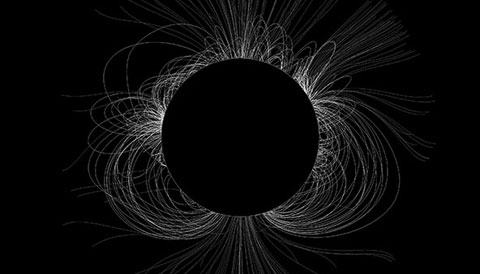

In figure 1, we show an example of recent solar observations at UV/extreme UV (EUV)/X-ray wavelengths, able to resolve coronal structures down to approximately 250 km. Solar observations provide us with a close-up view of magnetic activity, allowing us to investigate the characteristics of the magnetic field and magnetized plasma at high spatial and temporal resolution. Understanding magnetic activity is of fundamental importance for stellar astrophysics as it plays a crucial role in star and planet formation and evolution, controls stellar angular momentum loss, and drives orbital decay and evolution in close binary systems. relatively unevolved stars with convective envelopes below their photospheres, and it includes a variety of phenomena such as starspots, activity cycles, hot outer atmospheres (composed of chromosphere, transition region and corona) and magnetic breaking due to stellar winds (see, for example, a review in ). Stellar magnetic activity is ubiquitous in solar-like stars, i.e. Recently, significant progress has been made, both observationally and theoretically, in understanding coronal heating mechanisms (see also other papers in this theme issue on ‘New approaches in coronal heating’ for reviews of different aspects of recent coronal heating research). The detailed physical processes that heat the outer atmosphere of the Sun and of solar-like stars to millions of degrees are still poorly understood, and remain a major open issue in astrophysics.


 0 kommentar(er)
0 kommentar(er)
